Global Site
Breadcrumb navigation
Achieving Efficiency in Satellite Communications
With AI-based Waveform Distortion Compensation Technology
Featured Technologies April 15, 2025
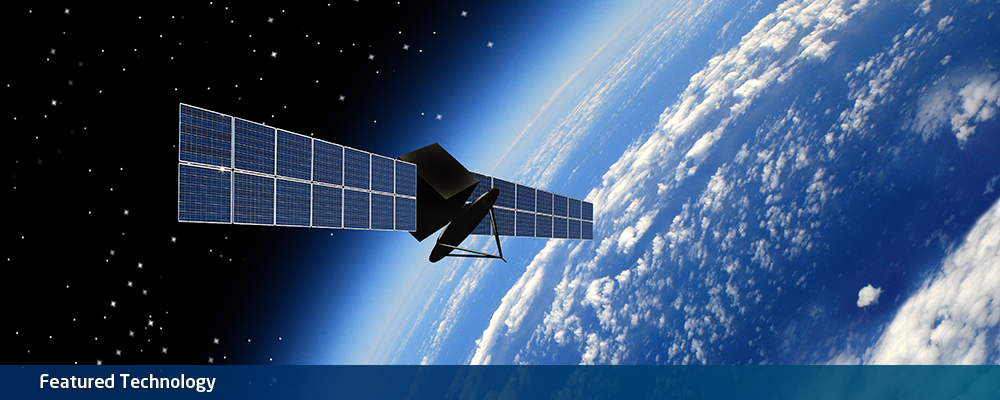
The wireless communication that we use today typically employs amplifiers to increase radio wave output. In addition, compensation technology is widely used to suppress distortion in the wireless signal that occurs during amplification. NEC recently developed distortion compensation using AI. We spoke with several of the researchers involved to learn more about this technology, which is capable of canceling distortion with low power and high accuracy even under harsh conditions such as transmitting from a satellite high in the sky.
Significantly reduces development costs in addition to reducing power consumption by approximately 30%
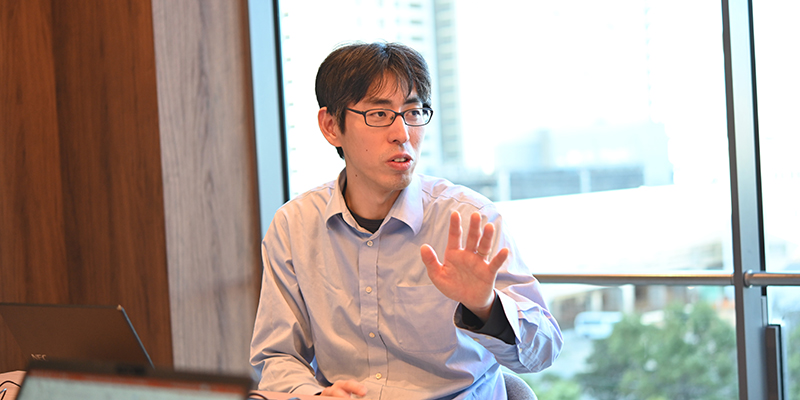
Professional
Advanced Network Research Laboratories
―Please tell us about the AI-based waveform distortion compensation technology.
Tanio: It is a technology that increases the efficiency of amplifiers equipped in wireless transmitters. Typically, amplifiers involve a trade off in which the signal quality does not improve unless the power consumption is increased. To improve this trade off, a technology called Digital Predistortion (DPD) is widely used to apply distortion that is the inverse of the distortion produced by the amplifier. In our approach, we use a custom neural network to achieve high accuracy distortion compensation with little computation (low power consumption). The AI-based waveform distortion compensation technology was announced in 2022, but we recently succeeded in demonstrating that it could be implemented in a small satellite.
Ogasahara: Satellite communications require radio waves to be transmitted from between hundreds and tens of thousands of kilometers in the sky, which means that the transmission output must be increased to an extremely high level. However, at the same time, the amount of power that satellites can use is limited. This is especially true for small satellites, which have been subject to increasing demand in recent years, because the solar cell panels they use to obtain power have become even smaller.
Tanio: In this recent demonstration, we worked with the division that is advancing the space satellite business within NEC and used an amplifier that will actually be equipped on small satellites to design and calculate the distortion compensation with AI according to those characteristics. As a result, we were able to verify that the technology can reduce power consumption by approximately 30%.
Ogasahara: In addition, we are newly developing a technology that automates the circuit design for distortion compensation. Each satellite has its own altitude and communication distance, so the distortion compensation circuit must be designed according to each set of conditions. In other words, the circuit in each FPGA (Field Programmable Gate Array), which is a type of rewritable semiconductor chip, must be changed according to the characteristics of each satellite. On the other hand, because the work to design the distortion compensation circuit can take several months or more, the time and cost required for development were major issues. In contrast, the recently developed automatic circuit design tool can generate the optimal distortion compensation circuit in just one hour, which significantly streamlines the conventional development flow.
Developing a low-computation neural network optimized for amplifiers

Professional
Advanced Network Research Laboratories
―What kinds of technologies did you use to implement this solution?
Tanio: For the distortion compensation, we use AI to create a high accuracy inverse distortion filter and cancel out the distortion. However, simply using AI requires a complex, multilayered neural network, which massively increases the amount of computation. Since the purpose of this project was to apply distortion compensation with low computation for use in satellites, standard AI could not be used under such conditions. So, we needed to come up with a new innovation. The breakthrough in this case was combining the neural network with a physical model. By using a physical model of an amplifier, we were able to find meaning in the connections of the neural network. While carefully interpreting the huge number of intricately connected neurons, we thoroughly pruned the connections that become unnecessary when the network specializes in amplifiers and leave only those that are truly necessary to create a highly efficient neural network.

Ogasahara: Generally, we think of AI as something that replaces complex and massive computations, so there is a tendency to think that it is not suited to situations that require a real time response such as communications. However, Tanio on the contrary believed that AI could be applied to real time communications as well by making it simpler. Currently, I am acting as a bridge between the laboratory and the business unit to accelerate the commercialization of research, and I was really impressed at how different their perspective was on this point.
Tanio: In this project, we were able to interpret the most essential part of the amplifier and embed it into an efficient neural network, so I think it has become a broad platform technology that can be applied to not only satellites but other settings such as mobile communications and broadcast, etc.
Ogasahara: For the automation of the distortion compensation circuit design, we collaborated with NEC laboratories located overseas. This was realized by working together with a team that excels at turning AI into hardware and circuitry.
Aiming for utilization on the receiving side and application to inter-satellite technologies
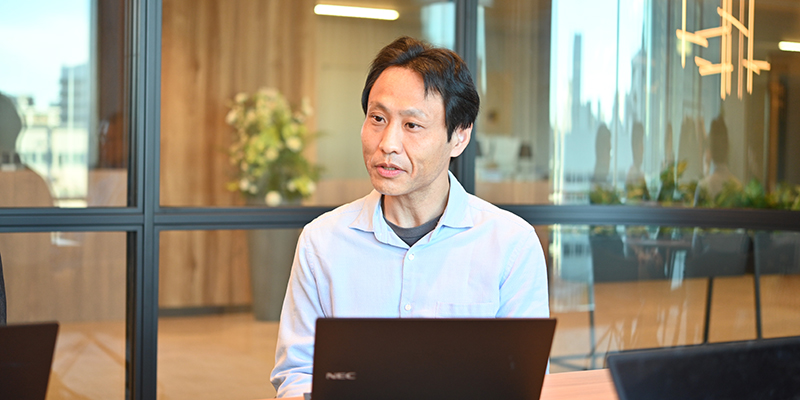
Assistant Manager
Advanced Network Research Laboratories
―Please tell us about the future development of this technology.
Hasegawa: The recently announced technology provides distortion compensation on the transmitting side, but I am currently researching the use of this technology on the receiving side as well. Even if the radio waves are amplified and sent on the transmitting side, satellite communications operate over a long distance and the signals weaken during receiving, so amplification is also needed on the receiving side. If distortion occurs in the waveform at this time, the data cannot be properly demodulated, so compensation must be applied to distortion on the receiving side as well.
If high accuracy distortion compensation can be implemented with AI on the receiving side as well, improvements in the communication quality and speed can be expected through a total synergistic effect with the transmitting side. Furthermore, if the receiving side can compensate for the distortion in an intelligent way, the transmitting side may be able to slightly decrease its power consumption.
We are still in the researching and investigation stage, so we hope to properly establish the technology and connect that to a future of stress-free satellite communications.
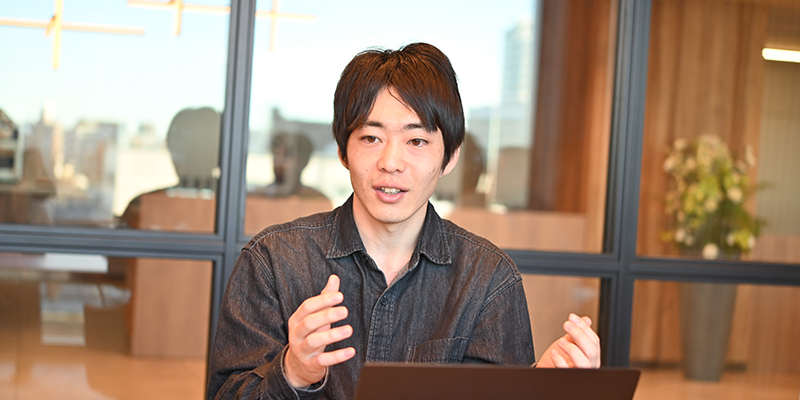
Assistant Manager
Advanced Network Research Laboratories
Yoshida: I am working on the application of this technology to inter-satellite link technologies. As a result of the decrease in launch costs of satellites in recent years, systems that operate by linking a large number of satellites are attracting significant attention. It is expected that this will be able to provide high-quality communications over a wide area, but the question of how to efficiently control the radio wave beams is a major issue. The beams must be accurately controlled according to the distribution of terrestrial users and communication demand.
If distortion is present, the satellites may be unable to properly control the shape of the beams or interference may occur between multiple beams emitted by a single satellite, leading to a decrease in communication quality. If we can apply the AI-based waveform distortion compensation technology to this problem, it would open up the possibility of achieving NEC's own high-capacity, high-speed, and high-quality communication system. We hope to continue our research to make new services a reality.
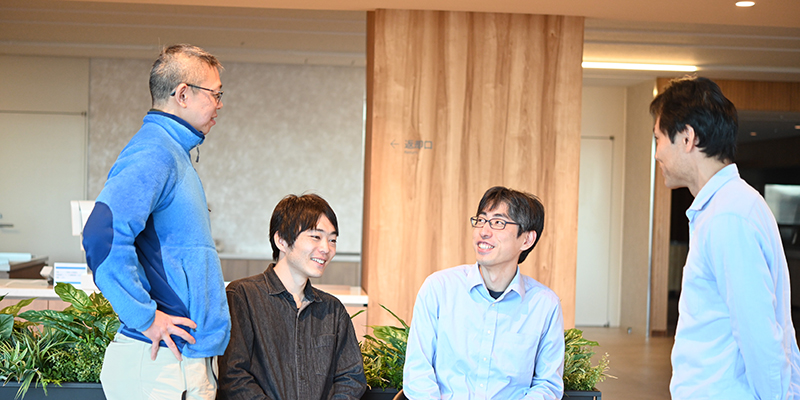

The AI-based waveform distortion compensation technology cancels out distortion produced by the amplifier of wireless transmitters. Using a neural network, it creates a high accuracy inverse filter that can eliminate the distortion. AI-based distortion compensation is an approach that is often featured at academic conferences, but it has not advanced to practical application due to the massive amount of computation required. NEC recently utilized a physical model of a wireless transmitter amplifier to develop a neural network that specializes in amplification. By thoroughly pruning unrelated neuronal connections and optimizing the network, it reduces the amount of computation. As a result, it was verified in a demonstration that it can reduce power consumption by approximately 30% even when equipped in a small satellite that requires low power consumption.
In addition, the company developed an automatic design tool for distortion compensation circuits equipped on satellites. The development period, which used to require several months to design a circuit for one satellite, has been shortened to less than one hour.
- ※The information posted on this page is the information at the time of publication.
Related information
 January 21, 2025 Press Release (PR TIMES, in Japanese)
January 21, 2025 Press Release (PR TIMES, in Japanese)
NEC Develops AI-based Waveform Distortion Compensation Technology that Significantly Reduces the Power Consumption of Wireless Communication Devices on Satellites December 9, 2022 Press Release (PR TIMES, in Japanese)
December 9, 2022 Press Release (PR TIMES, in Japanese)
NEC Uses AI to Develop Distortion Compensation Technology that Doubles the Range of Fixed Wireless Communication